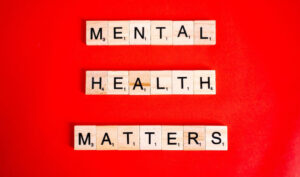
Can Essentialism Help Your Team Avoid Burnout?
Imagine an organization that consistently delivers exceptional results, maintains high employee retention, and fosters a culture of growth and passion. This may seem beyond reach

Imagine an organization that consistently delivers exceptional results, maintains high employee retention, and fosters a culture of growth and passion. This may seem beyond reach

In today’s uncertain business and economic environment, employee mental health challenges are on the rise. In response, workforce planning is emerging as a crucial strategy

Toxic cultures are like dark clouds looming over the world of work. Wherever they go, they wreak havoc with employee wellbeing. That’s not an overstatement.

In today’s fractured, post-pandemic world, workforce mental health has emerged as a critical concern for business and HR leaders — and with good reason. The

We bought mental health tools, but has everyone bought in? Many companies understand the importance of promoting mental health in the workplace. As a result,

Pandemic-related mental health is undoubtedly top-of-mind. In addition, there tends to be an uptick in dialog about mental health this time of year because May

Mental Health Awareness Month is here again. For leadership, it’s a critical opportunity to reassess how your organization supports the mental health of your workforce,

What are some ideas to make mental health support more accessible to employees? This question was posed to a group of talented professionals for their

For too long, the workplace has been viewed as a mystical place where we bring a version of ourselves that is unbreakable. It’s a version

In a bittersweet lesson, the pandemic has shone a bright light on the inequalities that we’ve lived with for far too long. These inequalities continue

For too long, employers have leveraged time off to support employee mental health. We’ve all heard managers or supervisors respond like this to a stressed

The coronavirus pandemic has greatly accelerated two recent and parallel trends in employee benefits. One is that more employers want to take a holistic approach

As a human resources professional, you’re no stranger to thinking on your feet and solving complex problems. You never quite know what you’re going to

Just when everyone got the hang of working from home, employers are bringing whole departments back to working in office settings. According to CNBC reporting,

Companies have specific priorities to help them create traction and build better businesses. They make sure their finances are going well, remain competitive, and engage

“Do you listen to the girl in red?” It’s a good question for anyone whose job it is to understand workplace culture and employee mental

Ever get that blah feeling? That surge of listlessness you can’t explain? The thing that keeps you in bed watching Buffy the Vampire Slayer until

It’s now starkly obvious that the coronavirus pandemic has changed so many aspects of our lives — not the least of which is the mental